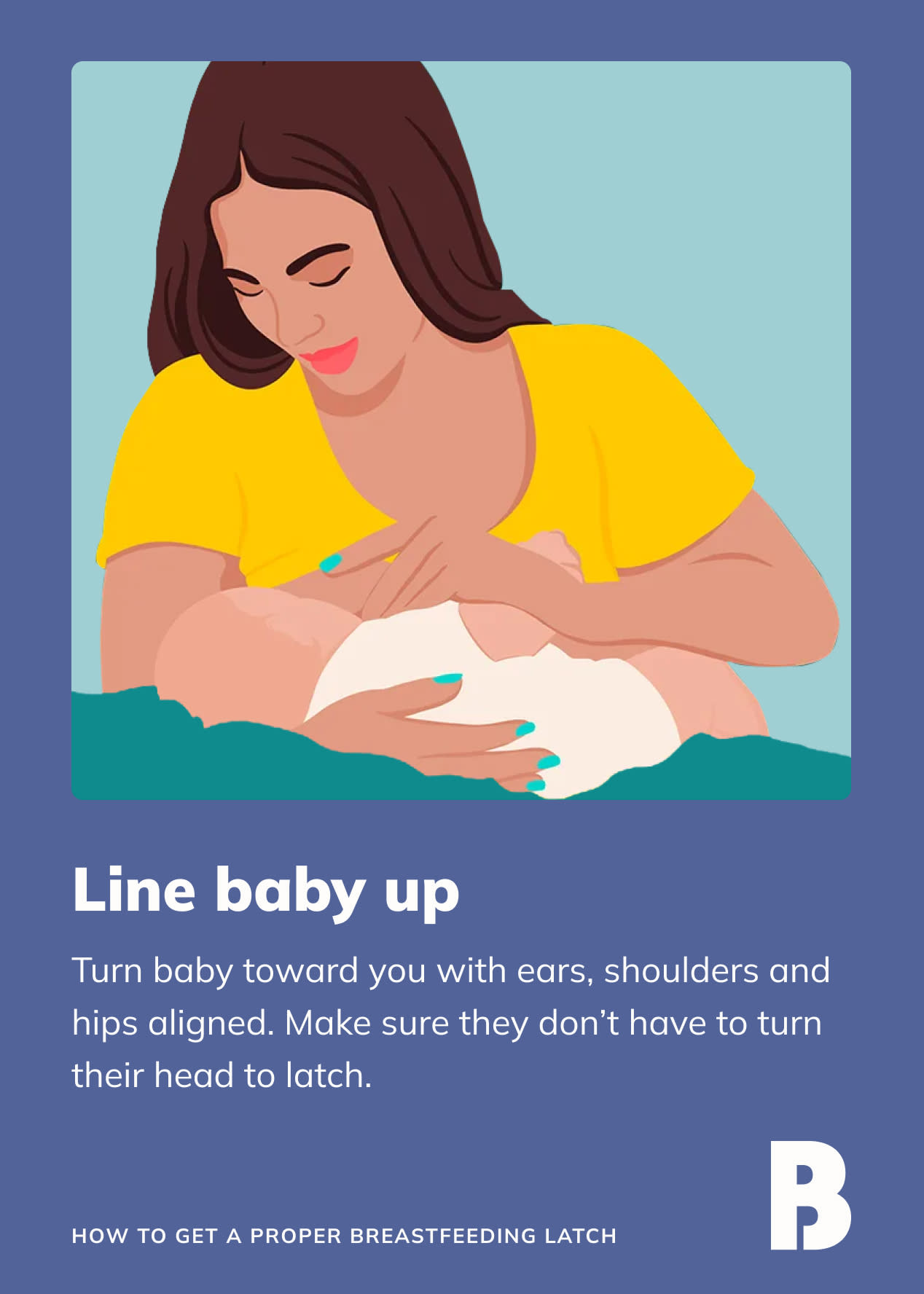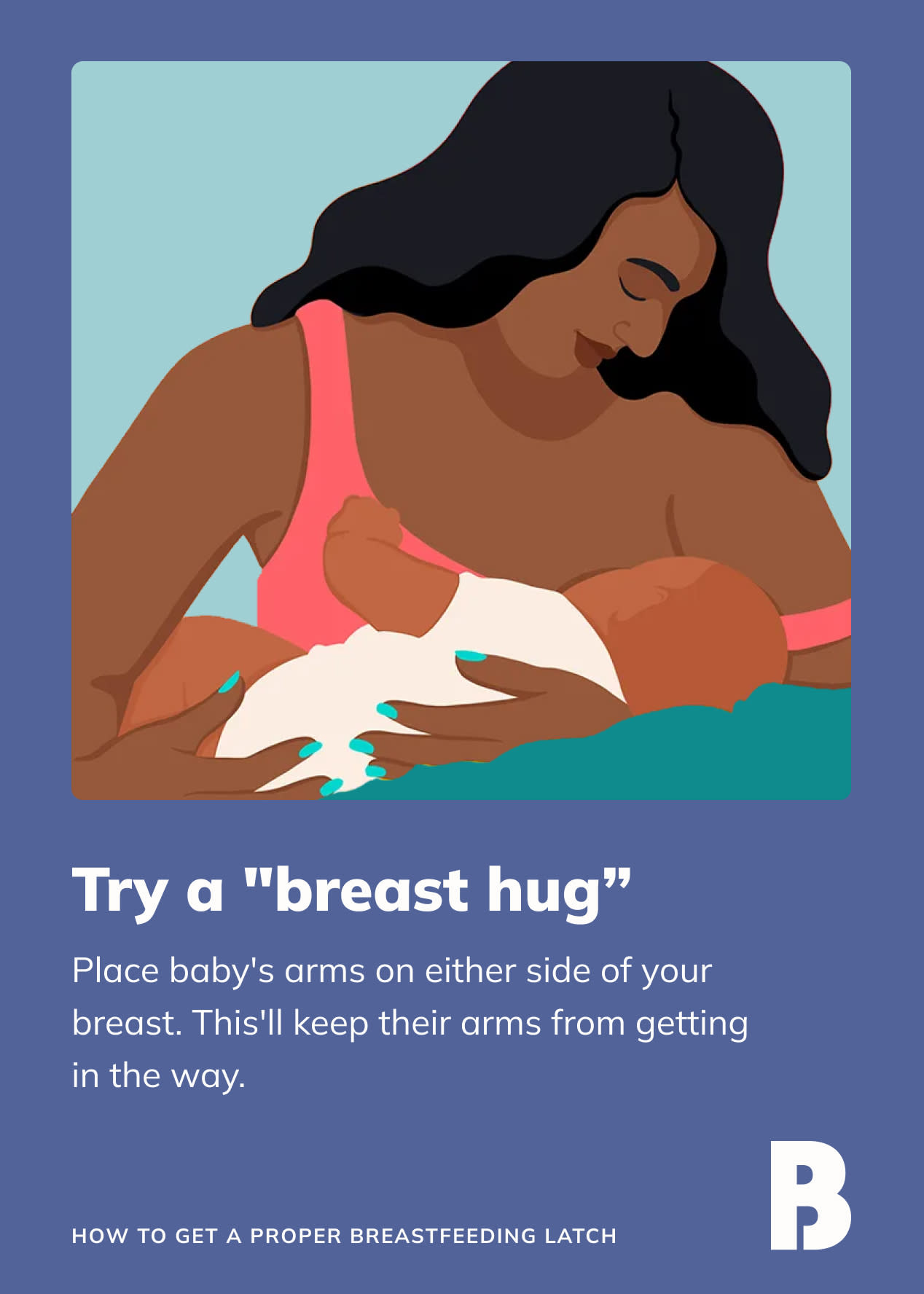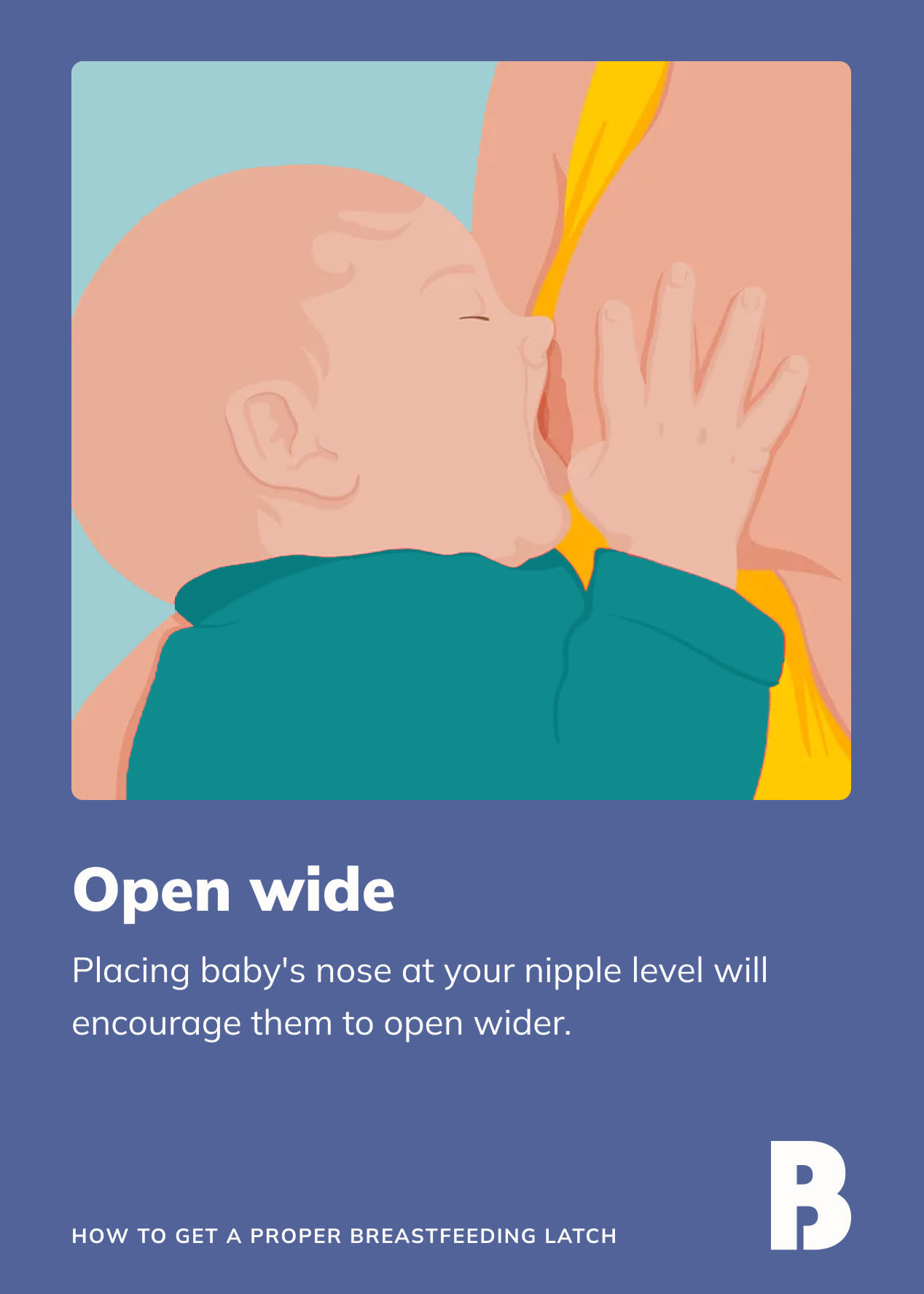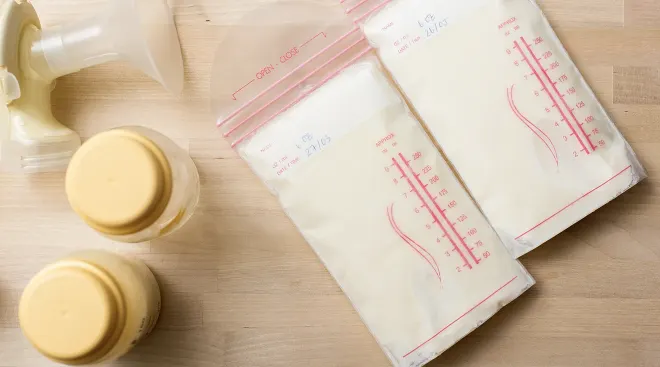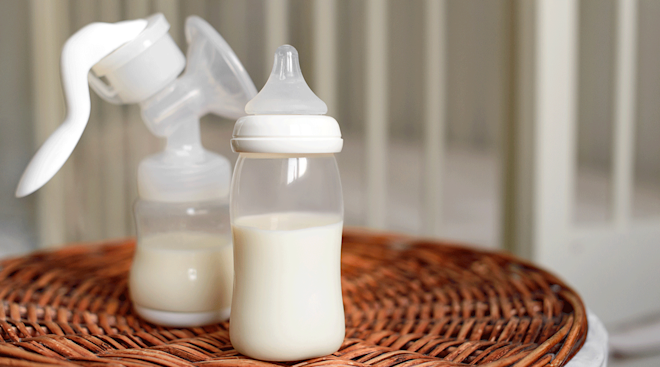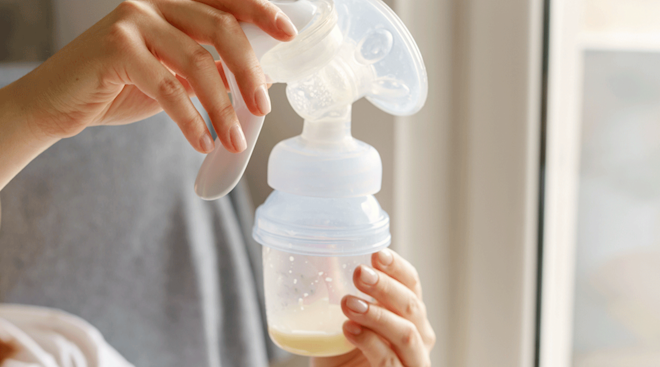How to Get a Proper Breastfeeding Latch
Achieving a proper breastfeeding latch can set you and your newborn up for successful feedings. Of course, if baby won’t latch, it can be incredibly frustrating—and even painful. The truth is: It’s not always intuitive or easy, but there are steps you can take to encourage a good latch from the get go. Here’s how to master a proper breastfeeding latch, plus best breastfeeding positions to try and advice on when to seek help from a lactation consultant.
A breastfeeding latch is how your baby connects with your breast to get breast milk, explains Pam Freedman, executive director for the international breastfeeding resource La Leche League Alliance for Breastfeeding Education. It facilitates comfortable milk expression, which promotes milk supply and “makes all the difference in how much milk baby gets and how comfortable breastfeeding is for Mom,” she says.
Andrea Syms-Brown, IBCLC, a New York City-based lactation consultant, describes a proper breastfeeding latch as “having baby’s mouth fully attached to the areola, with little to no areola visible outside baby’s lower lip.”
When baby starts showing signs they’re hungry, they might put their hands to their mouth, turn their head toward the breast or clench their fists, notes the Centers for Disease Control and Prevention (CDC). Here’s how to get a good latch breastfeeding once you notice those hunger cues, according to Jacque Ordner, IBCLC, BSN, RN, a lactation consultant, registered nurse and medical advisor at Motif Medical:
• Line baby up. Turn baby toward you with ears, shoulders and hips in alignment, making sure they don’t have to turn their head to get to the breast, says Ordner.
• Have baby “hug” your breast. Place baby’s arms on either side of the breast, sort of like a “breast hug.” “This keeps their arms from getting between them and the breast,” says Ordner.
• Open wide. Make sure baby’s nose is at the level of your nipple, as this encourages baby to tilt their head back and open wider. “This also helps baby’s chin reach the breast first for an asymmetrical latch,” says Ordner.
• Sandwich your breast. Support and shape your breast as needed. “If you have rounder breasts, you may benefit from gently ‘squishing’ your breast into a ‘burger’ shape so that baby has an easier time latching deeply,” Ordner says. Make sure your fingers don’t interfere with baby’s latch. And don’t stop supporting right after baby latches; give baby a few minutes to get settled.
Ordner says that signs of a good breastfeeding latch include:
- No pain for Mom or baby
- Lots of breast and areola in baby’s mouth
- Baby’s chin is buried in the breast
- There’s a wide angle at the corner of baby’s mouth
- Baby’s lips are flared out
Ordner says that laid-back (Mom lying down), side-lying and football-holding breastfeeding positions are her favorites for encouraging a deep latch. Syms-Brown also recommends the traditional cradle position, where you hold baby across your lap, as well as lap nursing (baby sits up to nurse).
“Remember that babies love having as much contact with their mom as possible, so be sure you’re pulling baby’s body close against you to help them feel as secure as possible,” says Ordner. “This closeness encourages a deep latch. Getting skin-to-skin with baby will also help!”
“Pain is the number-one indication that the latch is inappropriate or shallow,” says Syms-Brown. “Nipple pain and/or damaged nipple tissue should never occur while baby is actively breastfeeding.”
According to Ordner, other signs of a poor latch include:
- Baby’s lips are curled in
- The angle at the corner of baby’s mouth is narrow
- Baby is latched only to the nipple, rather than having lots of breast and areola tissue in their mouth
- Baby’s acting fussy or frustrated at the breast, possibly popping off repeatedly
Common causes of a poor latch
According to experts, the most common causes of a poor breastfeeding latch include:
- Poor positioning. “This is, in my opinion, the number-one reason that babies have a tough time latching onto a breast deeply and appropriately,” says Syms-Brown.
- Missed hunger cues. Catching baby’s early hunger cues can help get a good breastfeeding latch, “as babies move their tongues into a position that [makes] latching more difficult when they cry,” says Ordner. “If baby is crying, hold them skin-to-skin to calm them before trying to latch.”
- Oral restrictions. Occasionally, oral restrictions such as tongue tie can make it difficult for babies to latch, says Ordner. If you think baby might have an oral restriction, reach out to your lactation consultant and ask for a referral to a provider who’s experienced in evaluating oral ties in relationship to breastfeeding, she says.
- Birth interventions. “If baby was born via assisted delivery, they may have pain or muscle tension that makes latching more difficult for a time,” says Ordner.
Looking for breastfeeding latching tips? Stay calm and feed on. If baby won’t latch, try to keep your cool and make a plan to get baby fed, advises Ordner. “In the first few days after birth, this might be a syringe, cup or spoon,” she says.
If baby consistently shows signs of a shallow latch despite repositioning, make sure to seek out the services of a lactation consultant to help create a feeding plan that protects your breastfeeding goals, says Ordner. “A lactation consultant can also help determine the root cause of the shallow latch and give tips for improving it,” she says.
Additionally, Syms-Brown says you’ll want to get help “if baby isn’t gaining weight appropriately, you have damaged or sore nipple tissue, or if your milk supply is low or not enough to support baby’s nutritional needs.”
Frequently Asked Questions
What does a good breastfeeding latch feel like?
Again, a proper breastfeeding latch shouldn’t hurt or feel particularly uncomfortable. “It should be pain-free with a gentle tugging or pulling sensation as baby drinks,” says Syms-Brown. Ordner adds that if you have existing nipple damage you might have residual pain, but it should lessen once you get a deep latch.
Can a nipple shield help with a baby's latch?
Nipple shields can be important latch tools if you use them under the care of a lactation consultant, says Ordner. “Most moms don’t need nipple shields, but others may benefit from their use if they have flat or inverted nipples, a preterm baby or a baby who has a preference for artificial nipples,” she says. “If you have nipple pain, it’s vital to get to the root cause of the pain rather than relying on a nipple shield.” She adds that, ideally, nipple shields should be used temporarily as they’ve been linked to low weight gain for baby, clogged milk ducts and low milk supply.
How do I know if it’s a poor latch causing my nipple pain?
Nipple pain can be caused by more than poor breastfeeding latch, says Ordner. Other culprits include “a poorly fitting pump flange, pumping at too high of a suction level, an allergic reaction, forceful let-down, engorgement or an infection of the nipple and breast tissue,” she says. Be sure to meet with a lactation consultant, who will help you get to the root of the issue.
A proper breastfeeding latch can make all the difference in your breastfeeding journey with baby early on. If you’re having any trouble with breastfeeding at all—or just have questions about breastfeeding—book an appointment with a lactation consultant. You’ve got this!
Please note: The Bump and the materials and information it contains are not intended to, and do not constitute, medical or other health advice or diagnosis and should not be used as such. You should always consult with a qualified physician or health professional about your specific circumstances.
Plus, more from The Bump:
Pam Freedman is the executive director for the international breastfeeding resource La Leche League Alliance.
Jacque Ordner, IBCLC, BSN, RN, RLC, is a lactation consultant, registered nurse and medical advisor at Motif Medical.
Andrea Syms-Brown, IBCLC, RLC, is a New York City-based lactation consultant and newborn care educator with more than 30 years of experience. She has previously served as president and education director of the New York Lactation Consultant Association.
Centers for Disease Control and Prevention, Signs Your Child Is Hungry or Full, July 2021
La Leche League International, Positioning
Learn how we ensure the accuracy of our content through our editorial and medical review process.
Navigate forward to interact with the calendar and select a date. Press the question mark key to get the keyboard shortcuts for changing dates.


































